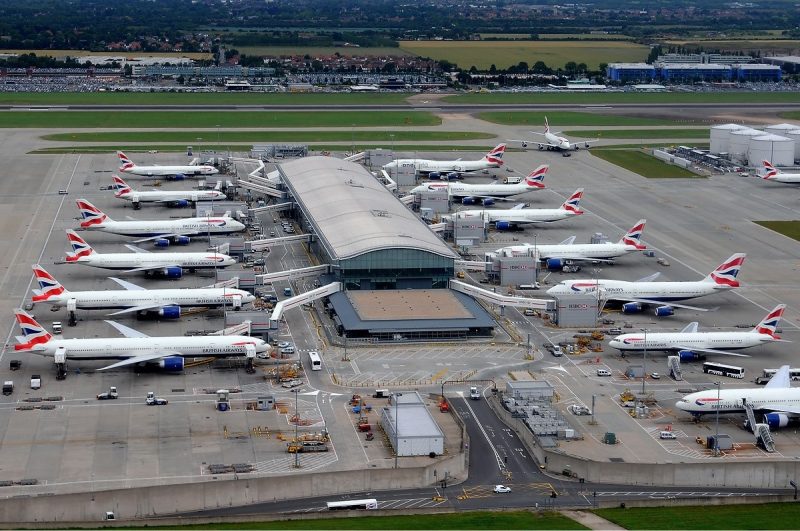You can’t have failed to miss the news that the government has approved outline plans for a third runway at Heathrow Airport. It is an emotive issue, evoking strong feelings on both sides; Boris Johnson once threatened to lie down in front of the bulldozers to stop the building work whilst Slough Borough council, in the immediate vicinity, called it the “right decision” and the IoD have said that “businesses will be delighted with the decision to proceed”.

Whilst we do welcome this decision in terms of it being essential for the economy (the runways at Heathrow currently operate at 99% capacity), we do so only because there is no viable alternative at the moment – especially since a replacement airport (aka “Boris Island”) was specifically excluded from consideration by the Airports Commission. We believe there is a wider issue; improving airport infrastructure and connectivity throughout the country through an integrated transport policy. The third runway at Heathrow will solve the immediate capacity problems but only in the same way that fizzy sweets give you a temporary energy boost; it works for a short time but then the dip comes and more substantial food is required. Slot capacity of the new runway will be fully booked before it is even open for business suggesting that additional runways at both Heathrow and Gatwick would be required to provide capacity in line with aviation growth. Heathrow has a major part to play but the role of other airports must not be overlooked.
The Importance of Improving Transport Links
If transport links could be improved between Heathrow and Gatwick and the regional airports, the regionals could act as satellite airports to the ‘hubs’. The geographical spread of passengers would be evened out and less concentrated into the Airports of the South East, thus easing the capacity issues faced by the likes of Heathrow. As well as this, the environmental impact would be reduced by the decrease and dispersal of the additional 700 flights a day expected to use the new third runway at Heathrow almost from the outset. Whilst it is clear that passengers have historically preferred to hub in and out of Heathrow, this is on the basis of the existing poor transport links with the other airports. Integrated mass-transit rail systems serve other hub airports around the world, so why not Heathrow too? Even when the Heathrow Express eventually connects with Reading, this hardly qualifies as integrated. It is astonishing that Heathrow was only going to be connected to HS2 by a spur line, and even this plan has now been dropped.
Development Further Afield
The need for development outside the Home Counties is finally becoming more obvious with the government saying it is “supportive of all airports beyond Heathrow making the best use of their existing runways”. The New MD of East Midlands Airport, Karen Smart, believes the government must now match its support for Heathrow. She says that it must provide “specific and practical proposals to maximise EMA’s global connectivity in the period to 2030, including support for better rail connectivity serving East Midlands Parkway, and backing regional transit infrastructure to link the proposed HS2 Toton to the airport.” High speed rail links and the decentralisation of airports would also bring much needed jobs and commerce to regional communities.
Fuelling Expansion
The jet fuel industry serves airports safely and reliably, and has always met increased demand. However concentrating demand at one location (Heathrow) inevitably puts more strain on particular supply chains, and means that fuel infrastructure capacity increases have to be considered. Any expansion of infrastructure comes at a cost which is ultimately felt by passengers in the form of higher ticket prices. The UK already has well-developed and integrated fuel pipeline systems which are almost invisible to the general public. They serve many of the principle airports in the country but are focussed on Heathrow and Gatwick. With more evening out of geographical demand, it should be possible to improve pipeline capacities without necessarily expanding infrastructure – meaning that passengers may not face price increases for reasons of fuel.
eJet is a dedicated supporter of sustainable growth within the Aviation Industry.
Here is a summary of the key points:
- As well as Heathrow, the importance of other airports needs to be recognised and further developed.
- Connectivity and communication between airports needs to be improved and an Integrated Transport Policy, also covering rail and roads, needs to be implemented, not just talked about.
- Alternative sustainable jet fuels need to get into mainstream supply chains in order to facilitate sustainable growth within the industry
- If more resources also went into the development of sustainable jet fuel and there was an even greater focus on airport carbon neutrality, the impacts could be lessened even further. If fuel for Heathrow’s third runway flights had to be delivered by road, it would require something like 180 tankers per day – thank goodness for the pipeline systems!
